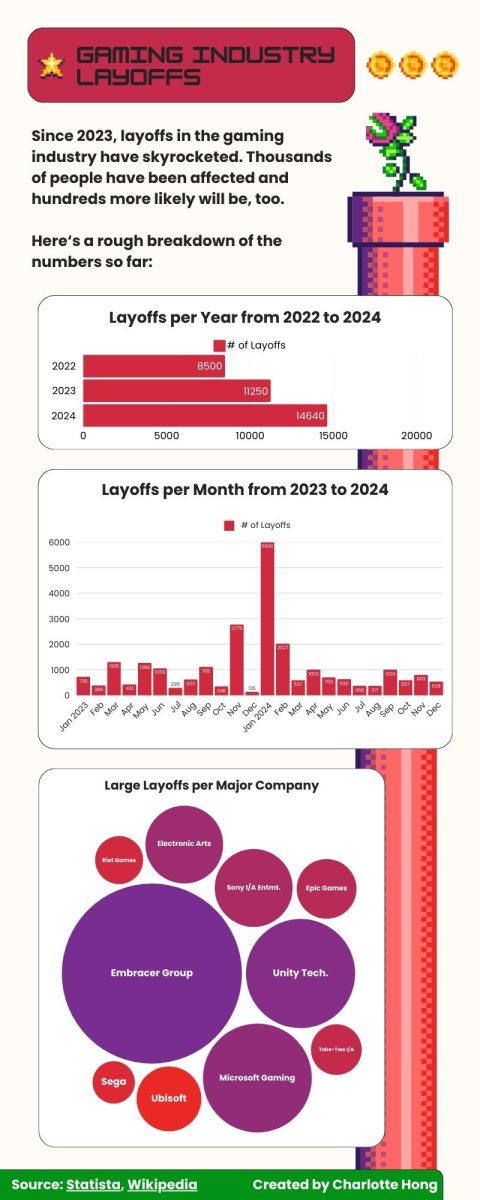Phone addiction is a problem. American people spend an average of 5 hours and 16 minutes on their phones a day, according to a study in 2025, with a 14% increase compared to last year. Phones take away from our daily lives, constantly. Our phones almost always have a seat at the dinner table and are with us wherever we go. They are a continual distraction and disturbance to our daily tasks.
Phones make it incredibly easy to procrastinate. This then affects real-life connections. The habit of just wanting to doom scroll all day, non-stop, is a great way of deteriorating our real-life social interactions. The lack of social interactions also highly affects our mental health. So are our phones really worth what is at risk?
In order to illustrate how much phones affect our lives, I interviewed two teens (my classmates) and two adults (my English teacher and my mom) about their phone use. I first asked, what is your average screen time daily? (This can be found in the screen time daily setting.)
Senior Jason Balquin answered 8 hours and 16 minutes a day, exceeding the average screen time in America. Senior Leah Lau answered 4 hours and 13 minutes, almost reaching the average screen time.
Compared to the two teens, the results of the adults shocked me because there was such a drastic difference between them. My teacher (Regina Roybal) answered, 1 hour and 41 minutes a day, super low compared to the teens. My mom answered three hours and 57 minutes a day, which is also surprising for how much I see her on her phone.
My second question was, how do you think the amount of usage of your phone has affected you? Is this use good or bad, and why?
According to Balquin, his phone use is admittedly “bad. More screen time gives me less time to do the things I need to do, more opportunity to procrastinate.”
Lau agreed, saying it is also bad “because it distracts me from school work.”
The adults had similar responses, saying that their phone usage has affected them poorly, even with their surprisingly low screen time.
“It makes me read less,” Roybal said. “I read fewer books but more news. For [tracking] physical stuff, it can be useful.”
Even my own mother admitted, “I find myself doom scrolling for no reason. It prevents me from being productive. Good things I use it for are my business, recipes, and bible apps/podcasts.”
Notice how all respondents had similar results? They all, in different ways, said that it prevents them from doing the tasks they need to do at hand.
Social interactions are also significantly negatively correlated with phone addiction.
“Excessive smartphone use, particularly social media consumption, has been linked to higher levels of social anxiety,” according to the website Balance Phone. “Many users find comfort in digital interactions but struggle with real-world conversations, leading to feelings of isolation. Additionally, studies suggest that screen addiction may reduce empathy, as online interactions lack the emotional depth of face-to-face conversations.”
Phone addiction leads to less social interaction, and less social interaction can lead to isolation or, in general, mental health issues. Think of it as a domino effect–one thing leads to another. Each issue leads to worse results, and that is exactly what is happening with addiction to phones.
While many are aware of the fact that they are addicted to their phones, they just can’t stop. According to Harmony Health care, “53% of Americans WANT to cut down on phone usage in 2025.”
But why can’t we stop? Let’s look into the psychological side of things. When watching videos or when on our phones, we tend to let out dopamine. This is a happy drug to the brain, indicating that it “feels good” and that we like it. This is what the problem is: dopamine can become addictive. Dopamine is the brain’s major reward and pleasure neurotransmitter. Anything that causes pleasure triggers a dopamine release.
While it’s a common misconception that dopamine makes you happy, the hormone actually reinforces behaviors that make you happy. A study by the University of Texas Permian Basin explains: “Smartphones are so addictive because every time we use them—to like an Instagram post, watch a YouTube video, or play Wordle—it triggers a surge of dopamine. After an initial rush of dopamine, there’s a dip like a craving: What goes up must come down. If a person isn’t addicted, the craving passes, but if they continue binging, the brain compensates with lower and lower dips.”
Dopamine is what keeps us hooked and addicted.
How do we disrupt this dopamine rush, though? Well, the first step is acknowledging you have a problem. If you are willing to admit that you have an addiction, there is a way for you to have the motivation to stop.
Next, think “out of state, out of mind.” The more you have access to your phone, the more you’re likely to want to use your phone. Keeping your notifications off and putting your phone aside keeps your mind away from what attracts you to want to pick up your phone.
You can also set a screen time limit to follow, and fill the time that you used to spend on your phone with something productive. It is easy to set a screen time, but harder to actually follow it. Self-discipline is key, but while filling your time with things you enjoy, it can make it less miserable.
You can even try a digital detox. A digital detox is very hard in today’s society, with how much we need our phones, but try to stick to what phones are meant for. Strict communication, such as texting and calling, and that is it. No music, no videos, no social media. Just calling and texting.
Phones are bad, but they weren’t intended to be. Phones can be a great way to connect with people far away. Your cell phone can be used to express your creativity through social media. It has many great qualities, but within certain limits.
While I love my phone, I know that it is a problem. Will you do something about your phone problem, too?






